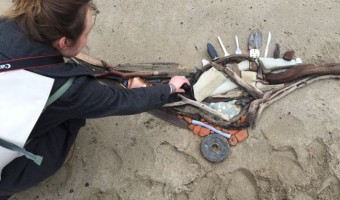The right effort at the right level
Let’s look at 4 ways of working with others. Your understanding of what happens at each level can help you become a more valuable contributor to any project. From there you can build a checklist for any collaborative effort you engage in.

Working together is a continuum. Starting from a point where no goals are shared, or very few, as in networking, the sharing can intensify to where most goals and project elements are shared, as in collaboration.
1. Networking
When you exchange contact information with someone and express interest in an idea at an informal meeting, you are kicking off a sharing process that you can pursue at a later date.
Examples: You’ll shake hands, exchange business cards, and offer to discuss ideas in the near future. Or you get called to a brainstorming session that needs your expertise.
2. Cooperation
This is when there there’s an informal sharing of information and activities for various goals. Partners informally hold one or two of these goals in common, although they may not share in the benefits and risks associated with a specific project or undertaking. They like to keep their resources and activities separate so that integration is kept to a minimum—only on an as-needed basis. This can become a longer-term arrangement.
Example: Your association shares a trade show booth with a company that offers services useful to your clients and members, dividing the participant fee, and making the booth more valuable to its visitors.
3. Coordination
More intense than cooperation, the parties involved build trust with one another, andcreate a deeper integration of their efforts and activities for a well-defined, shared purpose. Risks and rewards are acknowledged, while responsibility for them is distributed among the partners, not fully shared.
Example: Three companies are engaged by a non-profit to organize a benefit dinner event for a charitable cause; activities include arranging the venue, meals, speakers and entertainment. There is overlap in roles and tasks, so they agree to work together on many of the arrangements, as the success of the event depends on their coordinated efforts.
4. Collaboration
Example: Some years ago, Nike approached Apple about a chip to insert in their running shoe. Explore the story in the book, A More Beautiful Question by Warren Berger. Read the 2006 Apple press release, and read more about where Nike is today in supporting their customers as a result of this collaboration.
Your checklist for success
When two or more of us put our efforts together, the first thing we should check is the level of joint effort needed. Is it networking, coordination, cooperation, or collaboration? Once we have an idea of the degree to which we will be sharing, we can clarify our expectations and assumptions.
In the Ways of working together chart above, you see that as the effort, skills and investment increase, so do the sharing and integration of project goals and other elements. The intensity of collaboration increases, too.
The greater the level of collaboration, the more fully the goals and resources of the project are shared by the partners.
Our awareness of this can be very helpful at a personal, team, and organizational level. We can better assess our involvement in a project to understand what effort is needed. Have you ever offered too much to a project because you were passionate about the aim, only to find that it was not the real aim? We forget to share—and should check carefully—our assumptions about the project.
Somewhere on the continuum from networking to collaboration, you can see your activities in terms of what you understand is needed to reach the desired goal or purpose. In our different ways, contributors are gauging, accepting, and agreeing to an understanding of project elements, and it’s easy to lose track. Depending on the project, contributors share things such as:
- Information
- Resources and activities
- Goals, purpose, and expected results
- Roles, responsibilities, skills, and accountability
- Tasks, tools, and communications channels
- Possible challenges, assumptions, and compromises
- Benefits, risks and rewards
Do this as a team or have a facilitator assist the process. Contact me for a free initial consultation. We can work out how to assess what’s needed in terms of resources, other project elements, and, in particular, evaluation. Your shared goals are the basis for joint success!






